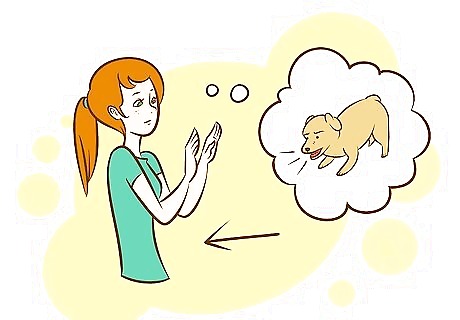
views

Gauge the dog's demeanor. Is it aggressive or afraid? Signs of aggression include: baring teeth, lifted tail, raised ears and hackles (the fur behind the neck, in many large breeds the hackles are very easy to see when they are lifted). Signs of fear include tucking the tail, laid back ears and also snarling or barking. Barking is a sure sign that the dog doesn't want you any closer than you already are.

Do not be misled by breed stereotypes. Look for body language to understand what the dog is trying to convey. A dog's behavior is determined more by its training (or lack thereof) than its genetics.

Most dogs, big and small, are not aggressive and are likely to be afraid of you. The most common situation is that a dog is lost, scared, and doesn't trust you. Even if they look frightening, their first instinct will be to repel you and get away.

For scared dogs, back away slowly until the dog is at ease. Do not try to command them. Note your location and, if the dog is unknown to you, call animal control immediately. If you know who the dog belongs to, of course, call them first!

For an aggressive dog, the first priority should be to protect yourself. Do not run, as the dog will catch you and will be encouraged to bite. Many dogs instinctively know how to "take down" a runner, and the last place you want to be is on the ground. Search for something to climb onto and call for help.

If there is nothing that can safely remove you from an aggressive dog, you should use your arm to deflect or absorb any bites. Do not aggravate an aggressive dog by shouting at it or staring into its eyes. Eye contact is aggressive and will likely spur an attack.

Very few dogs will actually bite a human being, if unprovoked. Stay calm and try to keep your stance tall and confident. Walk away, if you aren't being chased, and call animal control at the first opportunity. Dogs are pack animals. When they are alone, they are not usually looking for confrontation.



















Comments
0 comment